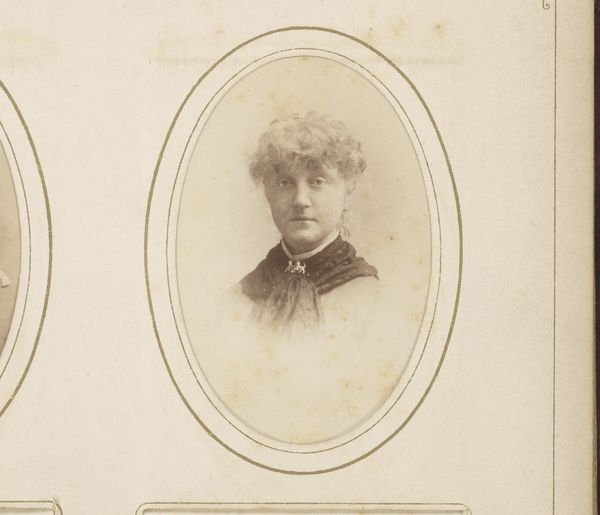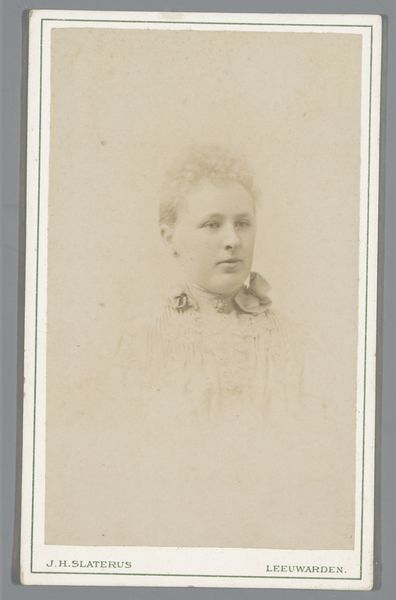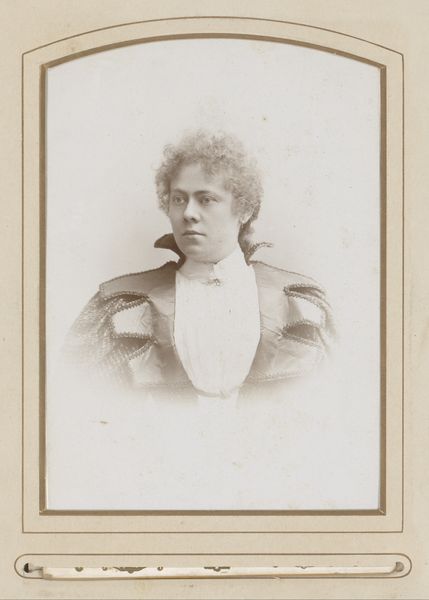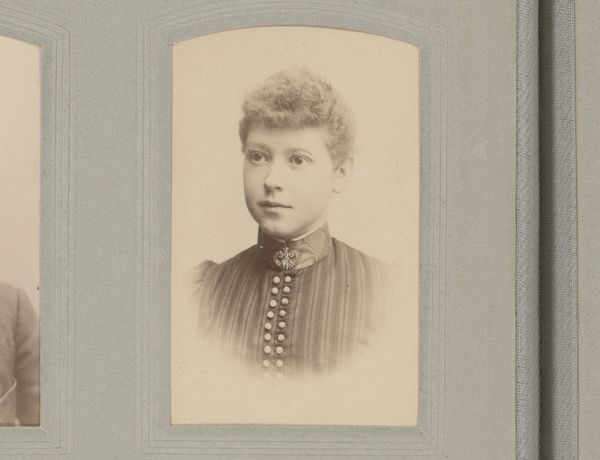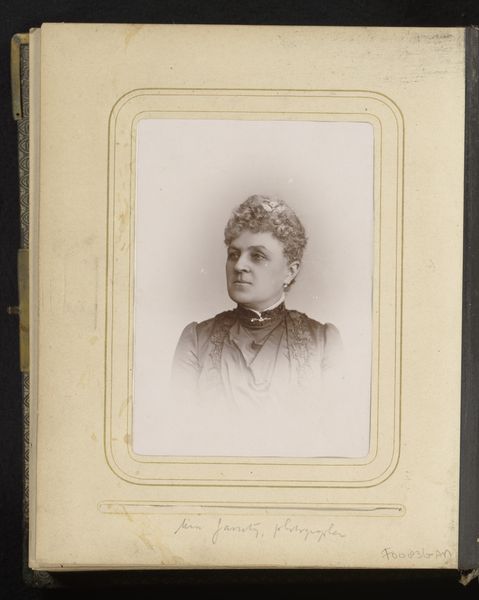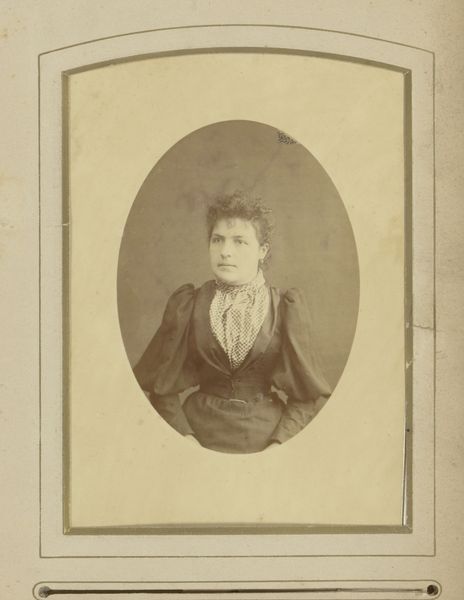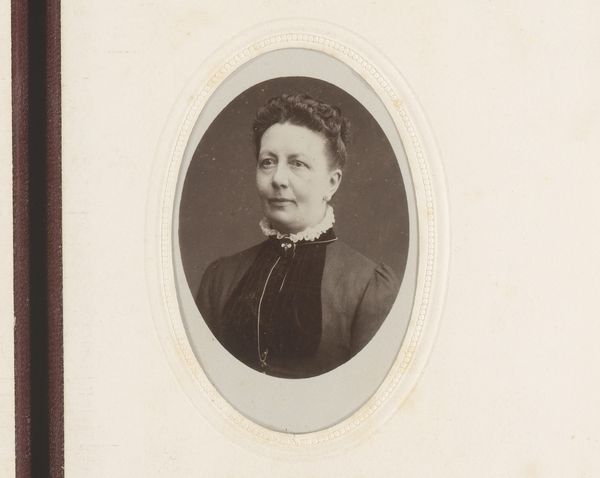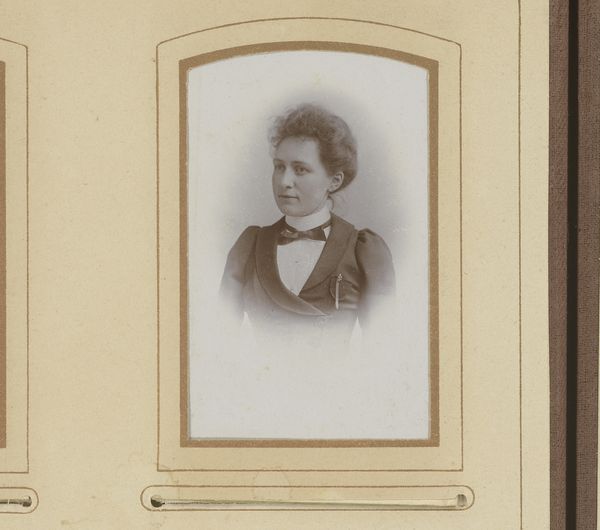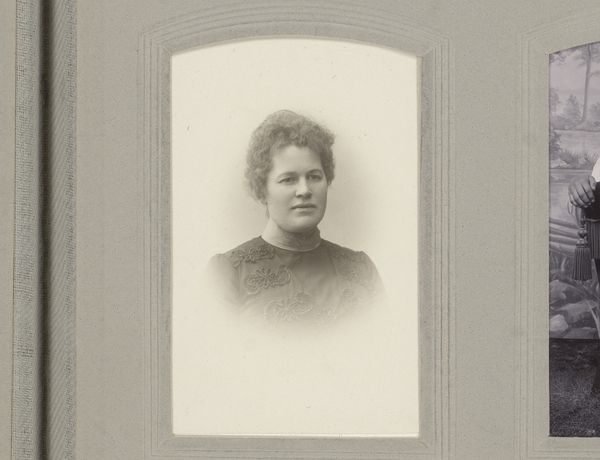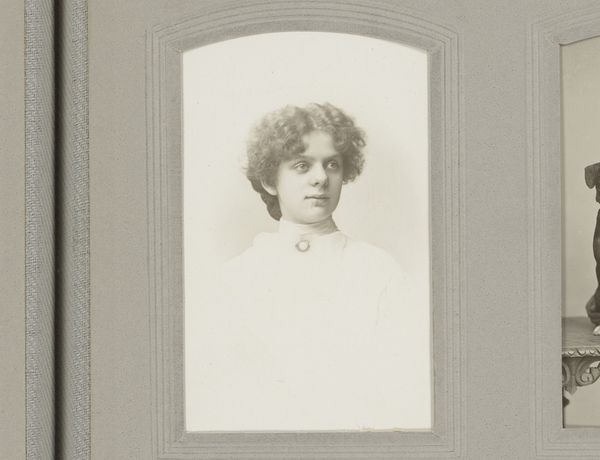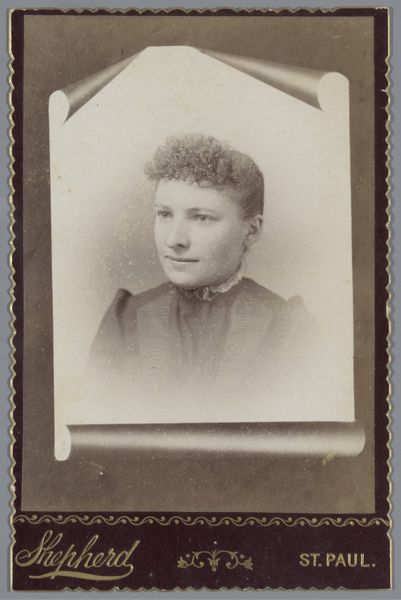
photography, gelatin-silver-print
#
portrait
#
photography
#
gelatin-silver-print
Dimensions: height 104 mm, width 63 mm
Copyright: Rijks Museum: Open Domain
Editor: Here we have a photograph, "Portret van een onbekende vrouw" – Portrait of an Unknown Woman – made sometime between 1882 and 1922, artist is H.C. de Graaff. It's a gelatin-silver print, a pretty common process from that era, but I’m still struck by the detail. What stands out to you about the materiality of this piece? Curator: The materiality speaks volumes about the changing landscape of image production at the time. The rise of gelatin-silver prints coincides with an increase in commercial studios. We should be considering this portrait not just as an aesthetic object, but as a commodity produced and consumed within specific social and economic conditions. The question of “who is this woman” then becomes less important than "who bought this photograph and why?" Consider the labor involved in creating this, from the studio assistant preparing the chemicals to the photographer carefully posing the subject. Editor: So, it's more about the industrialization of portraiture? Almost a precursor to mass media images? Curator: Precisely. Think about the standardized poses, the availability of the format. What does this tell us about the democratisation of image-making, or perhaps the illusion of it? Gelatin-silver printing enabled wider distribution of images, making portraits accessible to the middle class and affecting notions of identity. Editor: I never thought of portraiture this way, the image-making made it seem like an industry to me. Curator: Considering the processes, labor and reach of distribution gives us a new perspective to this work.
Comments
No comments
Be the first to comment and join the conversation on the ultimate creative platform.

